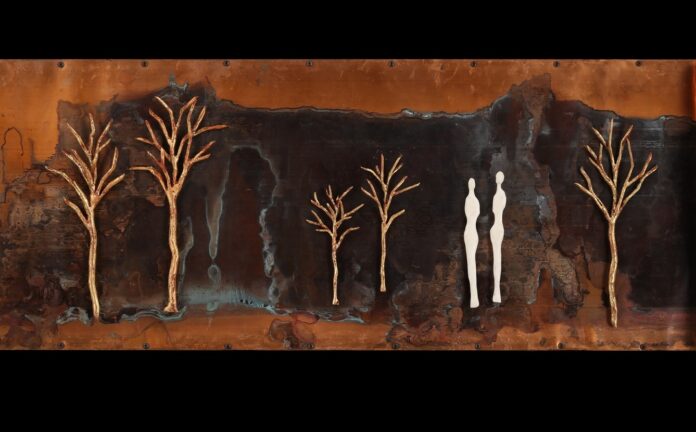From the age of antiquity to the present, the female archetype has long been a source of inspiration for artists. Metal sculpture artist Tor Archer is a devotee of this path, creating figurative works in fabricated copper, cast bronze, rusted steel, and plaster. An observer of the natural world and our intrinsic connection to it, Archer manipulates hard materials to evoke botanical elements.
Born in Massachusetts, Archer grew up in Santa Barbara, California in the late 1960s and ’70s, which had an influence on his artistic inclinations. He says at that time, there was a very vibrant arts community that he was aware of through his mother, who was a wood and metal sculptor, and his older sister, who knew from an early age that she would also be an artist.
“For me it was the physical life of time in the mountains and creeks, on the beach and in the ocean, that correlated to the physical nature of sculpture. It was through my mother and her artist friends that I became most aware that art was a way to spend one’s life,” Archer told 48hills.
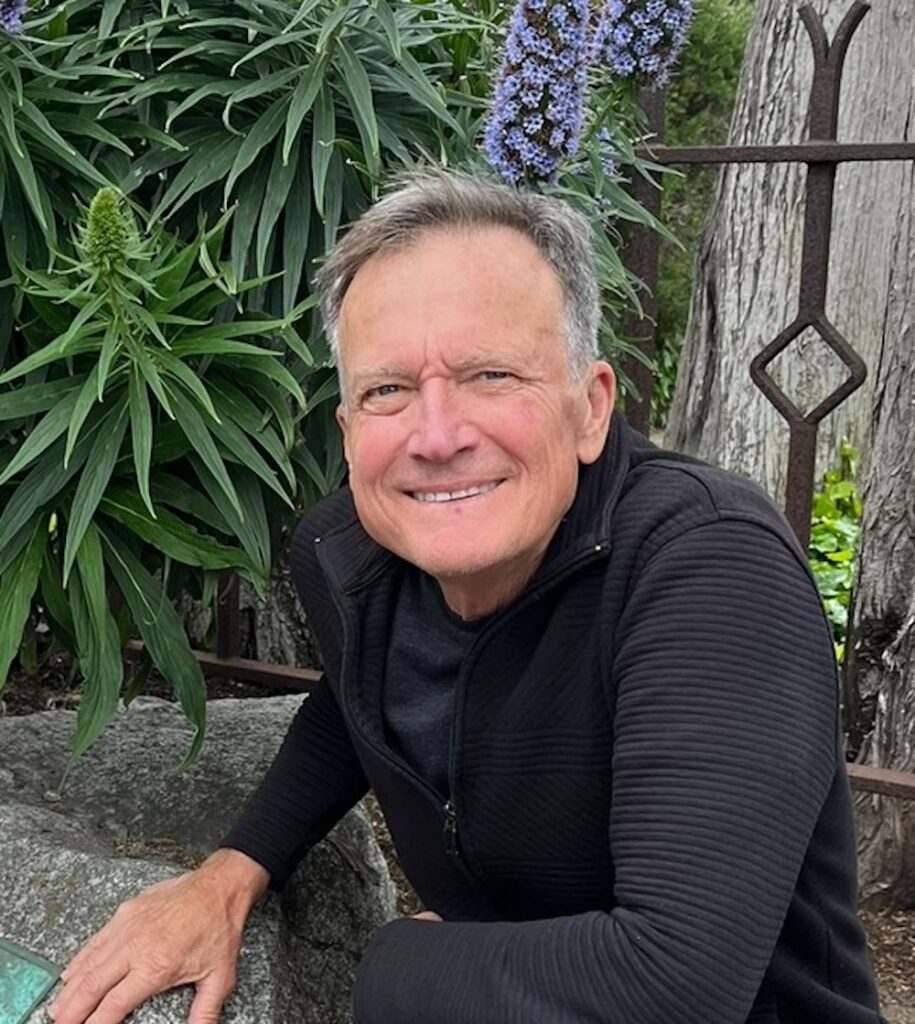
Archer came to San Francisco after graduating from the University of California, Santa Cruz (BA, 1983). In a temporary detour, Archer moved to Boston when his then-girlfriend, now-wife, was accepted into medical school.
Once there, Archer got work with a company restoring terra cotta ornaments on historic buildings throughout New England.
“It was, for me, an ideal job—hanging off the sides of buildings, restoring eagle’s heads, scenes of Pilgrim life, cornices and ornamental blocks, and learning how to apply gold leaf,” he said.
It was through other artists on his crew that Archer heard about the graduate studies program at Boston University’s School for the Arts.
“It had a very rigorous academic figure sculpture program that was of interest to me as a way to fill in certain areas of approaching figurative sculpture,” Archer said.
Enrolling in the program, Archer completed his master’s degree in 1987. Returning to San Francisco in 1988, he currently resides in the heart of the Upper Haight neighborhood.
“Whereas the element of hippie nostalgia can get a bit tiresome, I do find that anytime we have out of town guests I promptly take them out for a hippie tour and a picture at the corner of Haight and Ashbury,” Archer said.
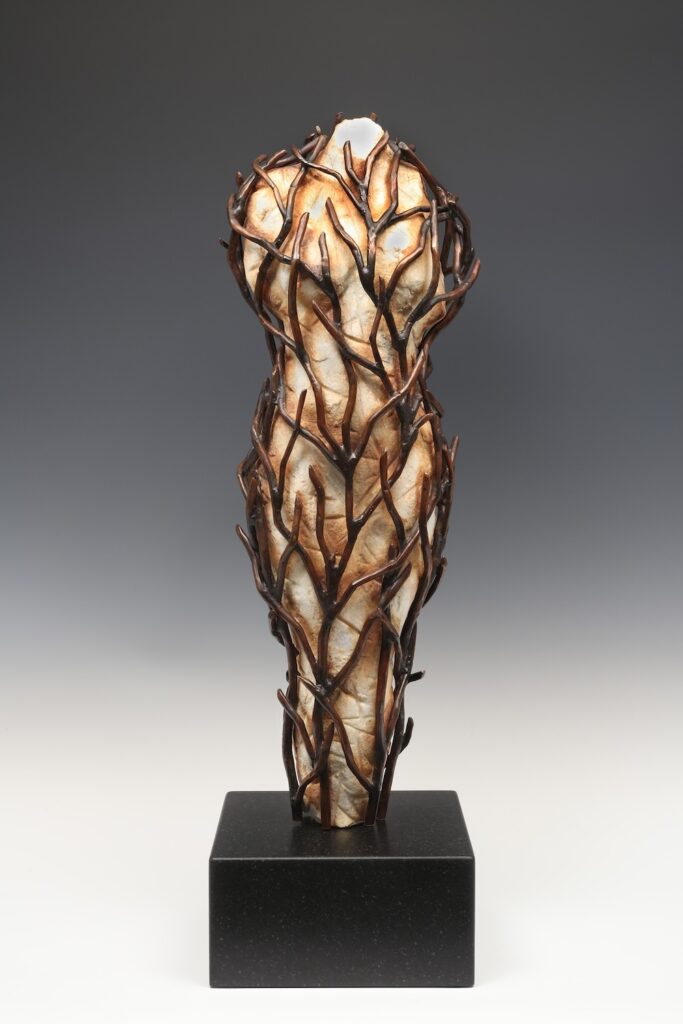
Archer says he likes the fact that the Bay Area art community is relatively small in relation to New York or Los Angeles, which lends a more intimate and manageable feel for the artist.
“Running into other artists one knows at openings, museum shows, or art fairs makes for a genuine community feel. At this point in my life and career, it is reassuring that there is a community still at it, working away and producing finished work,” he said.
Archer has always been and continues to be inspired by the art of the ancient past, particularly figurative work from Egypt, Greece, and Rome.
“I also look at simple figurines like the corn dollies of Europe, woven from corn husks by previous and current agrarian cultures. I also look at medieval manuscripts, scrolls, and various religious iconography for inspiration for the wall works I do,” he said.
Archer adds that more recent figurative inspiration comes from the artists of the Bay Area Figurative tradition, saying that his admiration of this work is one of the things that drew him to the Bay Area to begin with.
“In the physical making of these figures, I incorporate imagery from the natural world, namely the botanical, as a representation of the archetypal association of the female body with the earth. This is motivated by an appreciation of the presence of nature deities throughout the world and my own observations of the patterns, structure, and the abstractions found within nature,” he said.
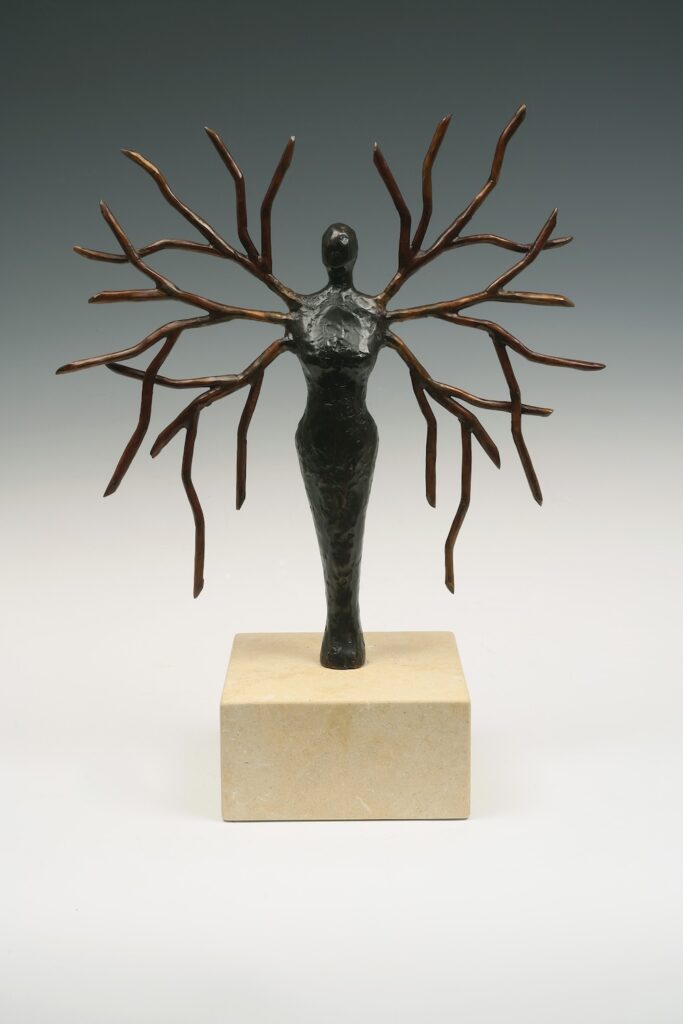
Archer’s studio, located in a building that originally served as submarine barracks at the former Hunters Point Naval Shipyard, is accessed through its own side entrance, allowing for easy access to working both inside and outside. With windows on opposing sides of the space and 11-foot ceilings, there is ample natural light. Archer has worked there since 1988. He says a typical day at his studio includes the morning’s welcoming chorus of birdsong.
“First off, I like to look at the previous day’s work which I may be happy with or not. To get things going I start with the rote work of materials preparation. This can be texturing copper tubing at the anvil, cutting leaf shapes in copper, or wrapping copper wire into pine needles,” he said.
From there, Archer either solders together a figurative form or uses the prepared components in a wall piece or a work on paper. Once a sculpture is completed, it is cleaned so that a chemical patina can be applied for coloration.
“Knowing when a sculpture is done is still not an exact art. I do fall back on my rigid academic figurative training at Boston University and look for a balanced alignment of the figure and bilateral symmetry. But in the end, it is mostly a gut feeling of a piece being just right,” Archer said.
Considering the arc of his creative life, Archer says it really began while he was in high school, roughing out wood sculptures that his mother was carving.
“I was rather content being outside with mallet and chisel, removing wood, which I found to be a meditative process. My mother suggested I carve my own work and I started with abstracted bird forms. This led to my studies in college where I was introduced to other methods and materials and the bird forms transformed into figures,” he said.
The figure has remained a constant throughout Archer’s career, evolving through different, evolving influences. They were once fabricated from scrap metals he brought home from a job restoring architectural ornament and statuary. This invited a more representational figure, which he fabricated in sheet copper with the repousse method, a metalworking technique in which malleable metal is shaped or embossed by hammering from the reverse side. His current figurative work developed from an attempt to represent the linear quality of his sketches where lines morph into twigs, leaves, reeds, and pine needles.
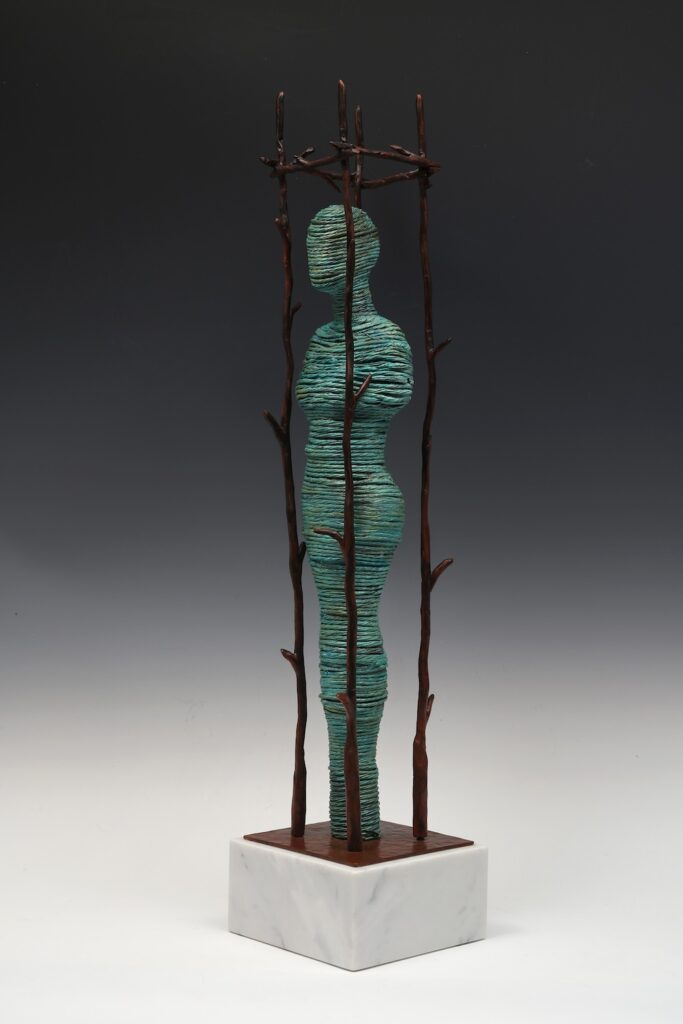
During the pandemic, Archer says he became somewhat reclusive, working at home. The studio assistant he had previously relied upon as a second set of hands moved away, resulting in his movement towards creating smaller works. Archer also experimented with other media during this time that were less physically demanding, like plaster and wax.
His work continues to take detours. Recent works from 2023, “A Woodland Nymph,” a figure in cast bronze and fabricated copper and “Venus of the Vines” both integrate more features from the natural world. His sculptures range from desktop to larger-than-life-sized, with the height of these two pieces coming in at around two feet. “A Figurative Accumulation” stands at nearly six feet tall with an 11-square-inch base. Wall pieces vary, the dimensions of the horizontal wall piece “Shrin-Yoku” are 40 by 14 by 2 inches.
Currently, Archer is working on a life-sized figure comprised of a greater variety of botanical materials than previous works, incorporating copper fabrications of twigs, leaves, pine needles, bound collections of reeds, and floral lily-like components. Not to mention, he is veering away from his usual black or brown patina by adding some color.
Archer is represented by Scott Richards Contemporary Art in San Francisco, where he will have a solo show in September 2025, and Julie Nester Gallery in Park City, Utah. A solo exhibition at Gallery Yuki-Sis in Tokyo is scheduled for October 5-19, and will include some smaller wall pieces with a nature-based themes.
He spends a lot of time gardening and trimming trees, which he says involves much of the same thinking and decisions as his art practice. He also cycles with his wife and gets out to observe nature as often as possible.
With works that connect abstract figures to the natural world combining hard and soft forms, sculptor Tor Archer hopes that people will stop and take ample time with his work. He hopes we will take note of not only the figures as a whole but also become absorbed in their abstract patterns. But his ultimate goal is one of interrelationship.
“I hope people might come away with an impression of the connection between the human and natural world,” he said.
For more information, visit his website at torarcher.com and on Instagram.

